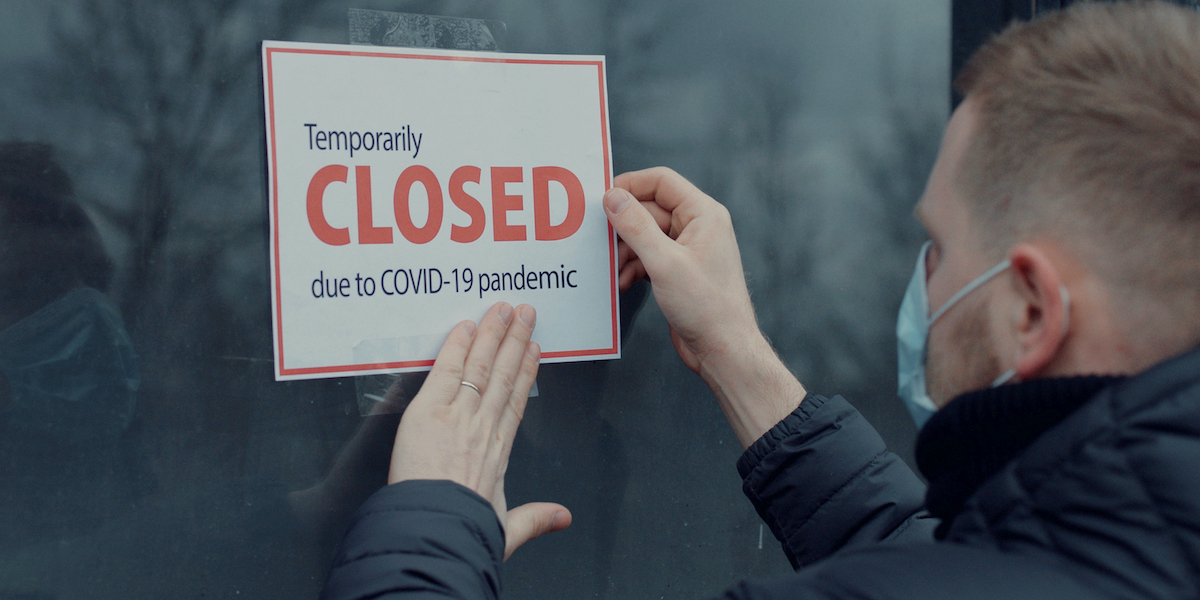
Reinventing reimbursement
CASE STUDY – The reimbursement department of the largest independent insurance company in Brazil has brought together lean and digitalization to improve its service to customers.
Words: Tatiana Ferreira, Selma Souza and Luciana Gomes
Reimbursements represent a key process for SulAmérica, not least because it is one of the few opportunities that we have to interact with our customers directly. Over the years, our department has undergone a huge cultural shift, which has completely changed the way we think about our customers and the service we provide to them.
Today, thanks to our efforts to embrace Lean Thinking and digitalize our process, we have greatly improved the customer experience, as we deal with an unprecedented volume of requests.
To understand where we are, however, it is important to explain where we came from. In this article, we would like to provide a timeline of our lean journey. We hope this can inspire others to take the lean leap, too!
Until 2009, we only worked with paper. We had boxes full of reimbursement requests all around our offices. We took our first steps towards digitalizing our work between 2010 and 2015, but the only difference with the previous system was that, instead of coming to us, the documentation was sent to an external provider. They digitalized it for us and sent it over.
In 2015, we initiated the second phase of our digital transformation, becoming the first insurance company in Brazil to receive reimbursement requests digitally. In doing so, we disrupted the market and gained a great competitive advantage. At the same time, however, we realized that we needed more than just technology to succeed; we also needed to engage our people and improve our processes. That is when lean came into the picture.
2015 – THE FIRST LEAN STEPS
From the very beginning, our department could count on the support of SulAmérica’s continuous improvement team. In 2015, they began to train us in the lean fundamentals. They taught us value stream mapping, so that we could finally see all the weak points in our process. We found that things didn’t exactly work smoothly all the time: clients expected a reimbursement in 14 days; instead, those who we not entitled to it were often given the bad news some 40 days after their request.
So, even though top management wanted us to rethink and digitalize the whole process right away, we decided it would be better to first focus on those reimbursement requests we rejected. This first step was enough to cause a first cultural shift in our department, convincing us that we had to rethink the idea of value for customers and how we provided it (that is when we worked on our strategic A3 on the reimbursement process, together with Lean Institute Brazil). We realized that value really meant paying customers back as quickly as possible. We also realized that if the request could not be reimbursed, we had to communicate the refusal as soon (and as clearly) as possible to our clients.
Redefining value is no easy task, and we still remember how much we struggled during those initial eight meetings (of eight hours each). We understood how important it was to just sit down and look at a problem in depth, but it was still new for us. We were not used to measuring and analyzing root causes. Luckily, the value of having a systematic and structured approach to problem solving quickly became clear to us.
Another pivotal moment in those first few months of our lean journey was a workshop with Kim Barnas, at the Lean Summit Brazil. She showed us examples of daily management and of standardized work. We left the workshop so excited that the following day we were ready to try it all out by ourselves. When, soon thereafter, we trialed the new system, the benefits were immediate. Leaders in the department, who were used to firefight on a daily basis, found their inbox empty by the end of the day and could therefore focus on what really matters – coaching team members and creating value for customers.
In many ways, we in the Reimbursements Department were lean pioneers within SulAmérica. We had one of the first daily management systems implemented in the company and our standardized work was very advanced. Our goal was to change people’s minds and help them to understand that the customer had to be our focus. What we were striving for was the “best reimbursement in Brazil”. Customer satisfaction became one of our key indicators (in the form of NPS) and we changed the way we looked at problems – no longer as something to avoid, but as opportunities to do things better.
In January 2016, we turned down 7.6% of the requests we received; in March 2017, it was 4.7%. Within the same period, our lead-time to issue rejections also went down, from 18 to 45 days to 2 to 8 days.
2017 – OUR LEAN EVOLUTION
In 2017, we consolidated our understanding of Lean Thinking, as we focused on improving communication with our customers and rethought the way reimbursement requests came to us. It was also the year we kickstarted our digital reimbursement process, which turned out to be a disruptive model in the industry.
To give our customers a better understanding of the reimbursement process, we created a dedicated landing page in SulAmérica’s website that explained each step in detail.
We then worked on an A3 that was meant to overhaul another troublesome process by better leveraging the collaboration between our department and the Medical Area. We had found that many clients got in touch with us only to know the amount of money they could be reimbursed in the event of undergoing a certain procedure, so that they could decide whether it was worth pursuing it. It typically took us a long time to answer those questions, because we had to involve physicians (they were the ones whose approval we needed) in the decision-making process. When we realized that this was a mindset problem (we were looking at the situation from a perspective that was completely different from that of our customers), we decided to act. The solution was much simpler than what we thought: we simply had to give clients a figure!
2017 was a fundamental year in our lean transformation. We reviewed our entire business model by initiating our digital process (22% of the requests were digital in 2017; 100% in 2018). In the meantime, Customer Service saw a 34% drop in the number of calls regarding reimbursements, as the landing page clearly started to bear fruit. Finally, we began to issue reimbursement estimates much faster than before (it took us seven days in July 2017 and only three days in March 2018). In 2017, we also won the CNSeg award for process innovation in our reimbursement process. We think that lean contributed greatly to this achievement.
2018/2019 – THE LEARNING CURVE GETS STEEPER
In 2018, people really embraced lean in their day-to-day work and the process was well-structured. Every day, come rain or shine, would start with our meeting by the visual boards, so that we could have a clear idea of where we were with our work and whether we were providing value to our customers. Everybody relied on those boards and those KPIs.
When we started our digitalization, it was for small amounts of documents and just for doctor’s appointments. In 2019, we changed provider because we wanted to enhance the quality of our systems. During the transition, there was also a clear impact on our performance: not only did we have to deal with the steep learning curve each new player faces when they join the game, but we were also expanding the scope of our digitalization efforts. Suddenly, we had much bigger volumes coming to us much faster, and for a while we struggled again. Even the smallest hiccup could generate big problems elsewhere in the process and create a bottleneck.
In response, our team had to learn to control a wider array of KPIs, which in turn consolidated the role of visual boards as our go-to system to manage the daily work. They also created their own quality indicators, in the hope to improve our NPS, and implemented new standards to support the work.
Throughout 2019, we widened and consolidated the roll-out of our digital process across the entire service value chain. We gradually overcame those initial challenges, but it was clear that there was still a gap in the performance of the external provider.

2020 – SUPPLIER SUPPORT AND PEOPLE DEVELOPMENT
To help the provider catch up, we provided them with our internal knowledge, inviting them to join our gemba walks and to attend our Quality Forums so that they could see the main problems they caused us.
But the real game-changer, which allowed us to dramatically improve our productivity as a team, was multiskilling our people. Until then, everyone used to work in their silo, unaware of the work going on in other parts of the process and of how their actions impacted it. So, in early 2020 we started this effort with only 33% of our team considered to be “multiskilled”. The year was full of challenges, as the pandemic forced our entire team to start working remotely. Throughout it, Lean Thinking was there to support our efforts to develop people and, by the end of 2020, nearly 90% of our team was multiskilled. What we see in their eyes now is the great satisfaction of knowing they are learning new things all the time and tapping into their full potential. That’s what lean is about!
When Covid-19 came, our department had already mastered the use of digital tools to process reimbursements. As the industry was scrambling to find solutions to the new problems, we continued to develop our people and to do our work. This gave us great competitive advantage.
This year, we are seeing a large increase in demand, which is challenging us to push towards automation and AI on one hand and to further review our purpose and internal processes on the other. We are looking at the Lean Transformation Framework and assessing where we are in each of the dimensions – an exercise that is proving remarkably helpful as we try to identify the gaps we need to fill if we are to continue to succeed in the future. Whatever challenge may come next, we know that lean can help us to tackle it. Knowing this helps us look to the future with confidence.
THE AUTHORS



Read more


FEATURE – In a transformation, should we spread responsibilities across the business or go for a centralized Lean Office? For their second piece, our Polish colleagues look at what they have learned on the field.


INTERVIEW – This cardiac laboratory in Singapore was targeting one improvement and ended up with something different, but equally impactful for its patient flow.


COLUMN – The author imagines an ideal, Jidoka-inspired response to the Coronavirus pandemic. This scenario might be utopian, but could it inform the definition of our True North?


FEATURE – How does lean apply to learning? The author reflects on the lean transformation his schools are undergoing and on its practical implications on students, staff and leaders.

